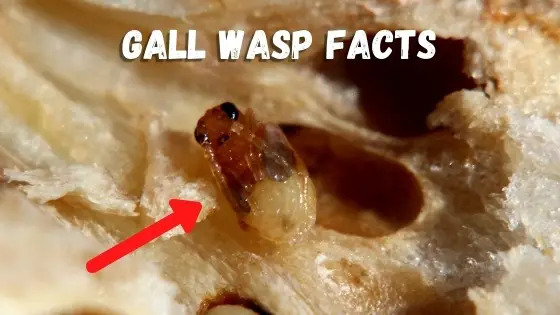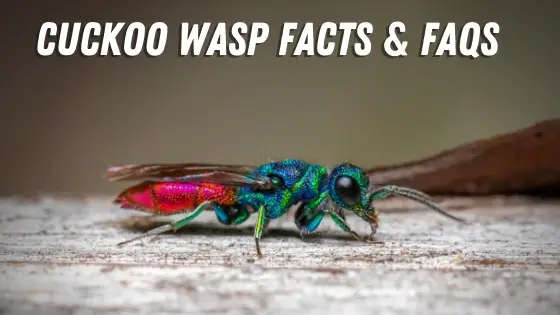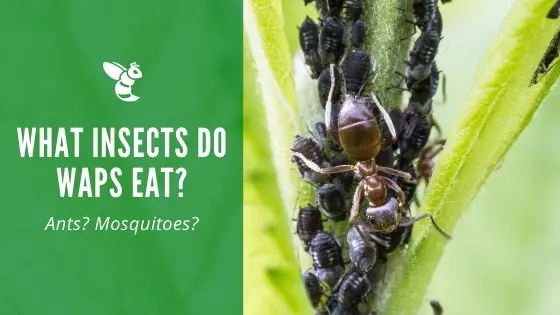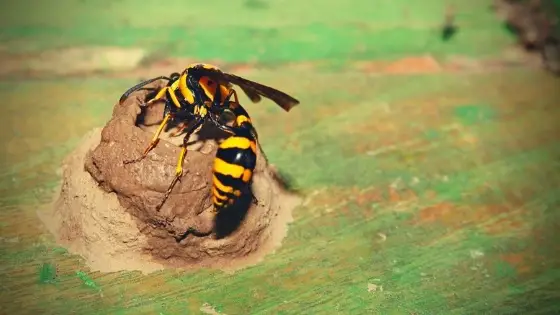Gall Wasps: Identification, Facts, & FAQs

What Are Gall Wasps?
A gall wasp is a type of insect that lays their eggs in the softer parts of a tree, plant, or flower. As the small larvae develop into full-grown gall wasp adults, the gall forms. This process can cause the plant to die or suffer as it cannot develop properly. They don’t usually grow larger than 1/3 of an inch, and they can be even smaller than that.
Where Do Gall Wasps Live?
The gall wasp, and the gall can live on just about any part of a tree or plant. This includes the buds, leaves, branches, and roots that are within the ground. There are gall wasps species that will only target roses, maples, specific herbs, or eucalyptus trees.
When a pest specialist is brought to a property where an infestation is suspected, they will often determine what kind of gall wasp they’re dealing with by how the gall looks on the plant. It can have very distinctive colors or markings that identify what is living within it. This helps determine the best course of action moving forward.
How is a Gall Formed?
The gall wasp has a life cycle that contains four different life stages. This includes the egg, larva, pupa, and adult stages. Once the female gall wasp has deposited her egg into her plant’s soft tissue that she’s moving into, this will begin the process. The egg will hatch, the larvae will feed, and a chemical reaction occurs inside the plant. This reaction is what causes the gall to form.
Are Gall Wasps Beneficial?
The galls formed from the infestation of a gall wasp can affect the plant quite a bit. Depending on how strong the plant or tree was to begin with, this will determine how well it holds up to these galls’ formation. Once a gall has formed, it can release toxins into the rest of the plant that can affect the growth rate.
Galls can also affect fruit production of fruit-bearing trees. That’s why gall wasps are considered to be a parasitic insect. Farmers try to rid them from their property, and homeowners should be just as cautious.
What Do Gall Wasps Eat?
Once the gall has formed, sustenance will come from this area for the larvae gall wasp. Once an adult, the gall wasp will not live very long. They don’t typically feed during this stage of their life.
Their bodies are constructed a bit differently than other insects. Gall wasps can’t produce excrement. They don’t have an anus, so they only expel waste when they are within the pupal stage of their life cycle.
Can Gall Wasps Sting?
Gall wasps have the ability to sting, though they may only do so if you’re tending to the plant that they are living on. If you keep your distance, they will likely leave you alone.
Many people who get stung by the gall wasp don’t even know they are located nearby. They may be pruning their tree or plant, only to inadvertently come across a gall wasp.
How Do You Get Rid of Gall Wasps?
The first sign that you may notice when it comes to a gall wasp problem is the galls forming on your tree or plant. It’s not as simple as just picking off these galls if you want to remove the wasps. For one, they may become very aggressive when this is happening. You want to avoid getting stung. You should stop and assess the situation before moving forward.
Take a look at where the galls have formed. You should also take into account how many there are. You’re going to go ahead and prune the plant or tree. You don’t want to end up trimming everything off, if possible.
Start by removing the branches or leaves that seem to be suffering from the galls. Removing these parts will help the rest of the plant thrive a bit easier. Make sure you’re wearing protective clothing when taking care of this process. You could come into contact with an angry gall wasp.
There are insecticide products that you can apply safely to trees and bushes if you’re trying to prevent gall wasps or treat any that are left. Just be sure that you read all labels before applying anything. You don’t want to end up harming your plant even more than it already is.
Make sure you’re using something safe for pets and children to be around if this is a concern for your home. Spring is the most common time of year for gall wasps to begin their life cycle, so spraying slightly before this time period can keep them at bay next year.



